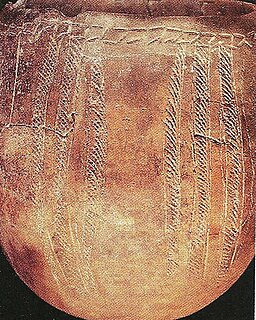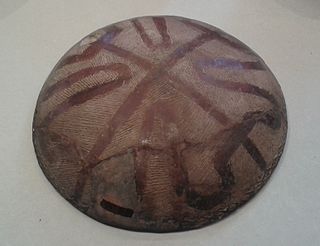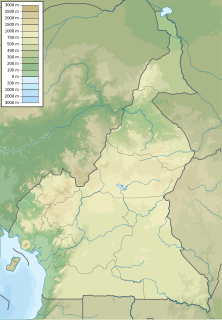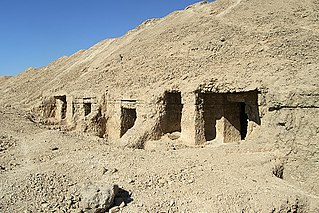 W
WAffad 23 is an African archaeological site located in alluvial deposits formed by an ancient channel of the Nile in the Affad District of Southern Dongola in northern Sudan.
 W
WAsa Koma is an archaeological site in Djibouti.
 W
WBehbeit El Hagar is an archaeological site in Lower Egypt that contains the remains of an ancient Egyptian temple to the goddess Isis, known as the Iseion. The site lies along the Damietta branch of the Nile, 7 kilometers (4.5 mi) northeast of Sebennytos and 8 kilometers (5 mi) west of Mansoura. In ancient times it was part of the nome of Sebennytos, the Twelfth Lower Egyptian Nome. Ancient Egyptian texts refer to the site as early as the New Kingdom, but it may have been simply an offshoot of Sebennytos rather than a full-fledged town.
 W
WButo, Butus or Butosus was a city that the Ancient Egyptians called Per-Wadjet. It was located 95 km east of Alexandria in the Nile Delta of Egypt. What in classical times the Greeks called Buto, stood about midway between the Taly (Bolbitine) and Thermuthiac (Sebennytic) branches of the Nile, a few kilometers north of the east-west Butic River and on the southern shore of the Butic Lake.
 W
WThe C-Group culture is an archaeological culture found in Lower Nubia, which dates from ca. 2400 BCE to ca. 1550 BCE. It was named by George A. Reisner. With no central site and no written evidence about what these people called themselves, Reisner assigned the culture a letter. The C-Group arose after Reisner's A-Group and B-Group cultures, and around the time the Old Kingdom was ending in Ancient Egypt.
 W
WCanopus, also known as Canobus, was an ancient Egyptian coastal town, located in the Nile Delta. Its site is in the eastern outskirts of modern-day Alexandria, around 25 kilometers (16 mi) from the center of that city. Canopus was located on the western bank at the mouth of the westernmost branch of the Delta – known as the Canopic or Heracleotic branch. It belonged to the seventh Egyptian Nome, known as Menelaites, and later as Canopites, after it. It was the principal port in Egypt for Greek trade before the foundation of Alexandria, along with Naucratis and Heracleion. Its ruins lie near the present Egyptian town of Abu Qir.
 W
WCemetery GIS is a necropolis in the Giza Plateau. It derives its name from its proximity to pyramid G I (Khufu). The tombs are located on the south side of that pyramid and hence the name G I South Cemetery. Reisner thought the cemetery a continuation of the G7000 cemetery which is part of the Giza East Field. The construction postdates that of mastaba G 7070 of Sneferukhaf. Junker dated the cemetery to the reign of Menkaure based on the presence of granite powder thought to derive from the dressing of the second pyramid at Giza. Reisner allows for a possible construction date dating to the reign of Khafre.
 W
WThe Diy-Gid-Biy (DGB) sites are archaeological sites located around the Mandara Mountains of northern Cameroon and Nigeria, overlooking the several kilometers long Shikewe watershed. These sites get their name Diy-Gid-Biy from the Mafa language, which can be translated as "place of chiefly residence." There are 16 of these DGB sites which date back to around the 15th century AD. While knowledge of these sites has existed for some time, only in 2001 archaeologists began to investigate the sites and their cultural heritage in relation to the region.
 W
WEl Hawawish is the name given to the site of the ancient necropolis (cemetery) for the city of Akhmim in the Sohag Governorate, Egypt.
 W
WGemellae was a Roman fort and associated camp on the fringe of the Sahara Desert in what is today part of Algeria. It is now an archaeological site, 25 km south and 19 km west of Biskra, and 5 km southwest of the present-day village of M'Lili with which it probably shares an original Berber name. It was connected by military Roman road to Castellum Dimmidi and Capsa.